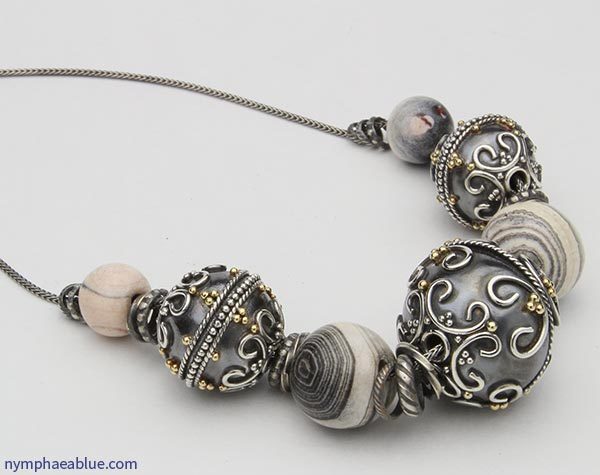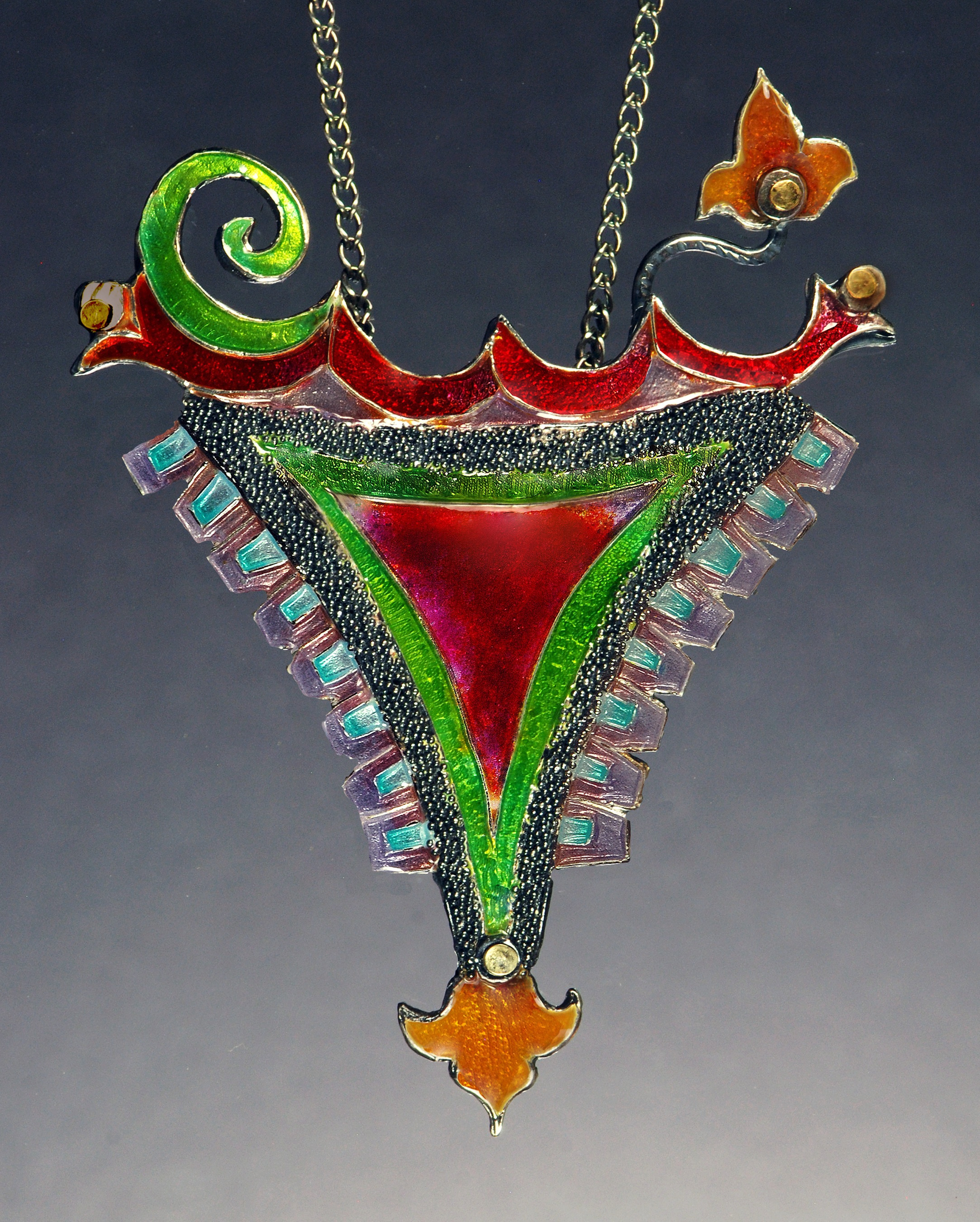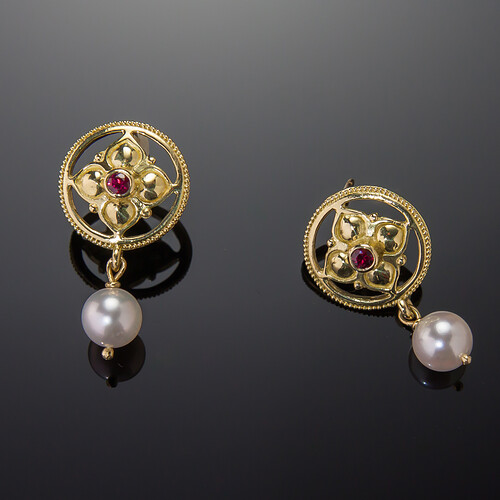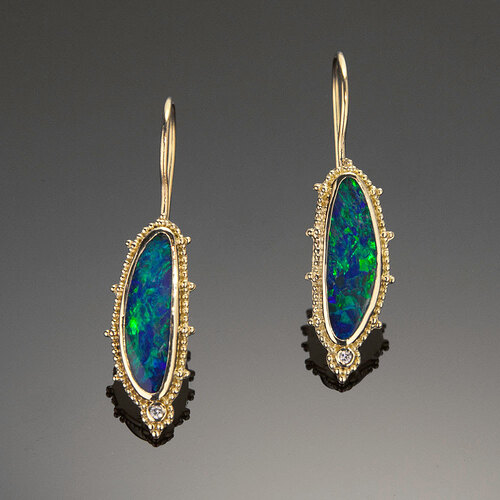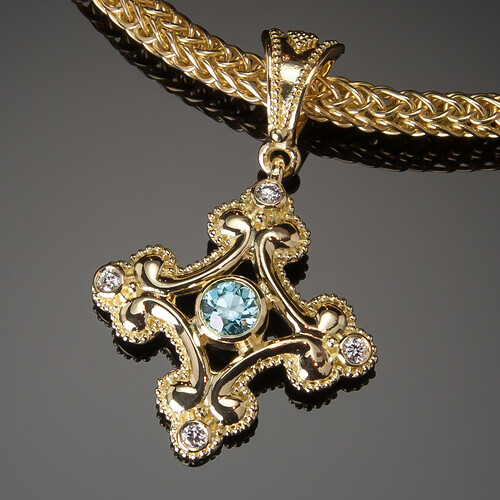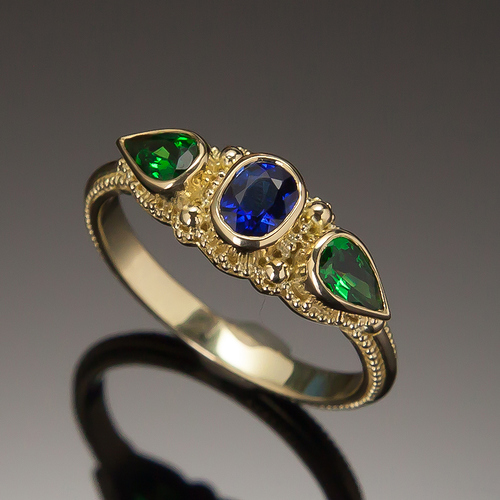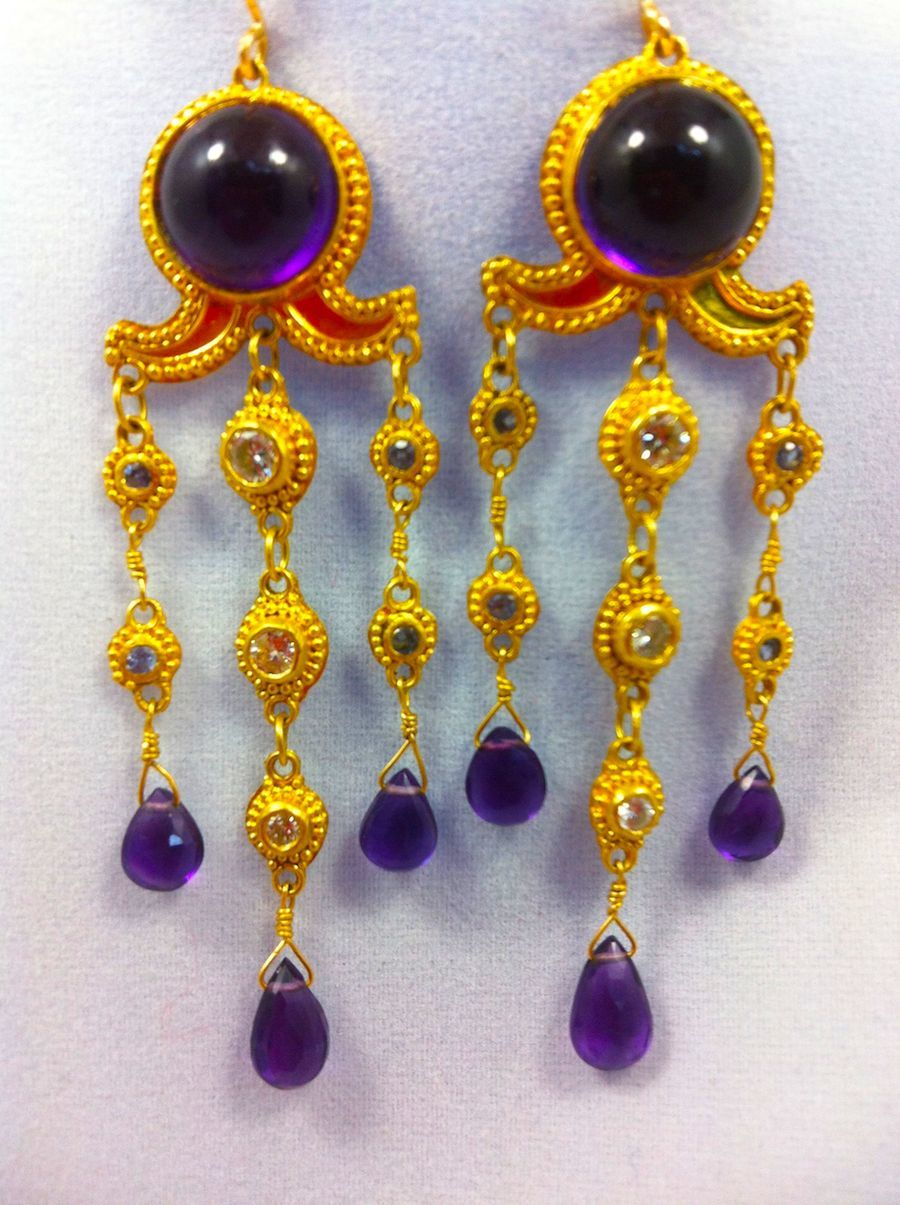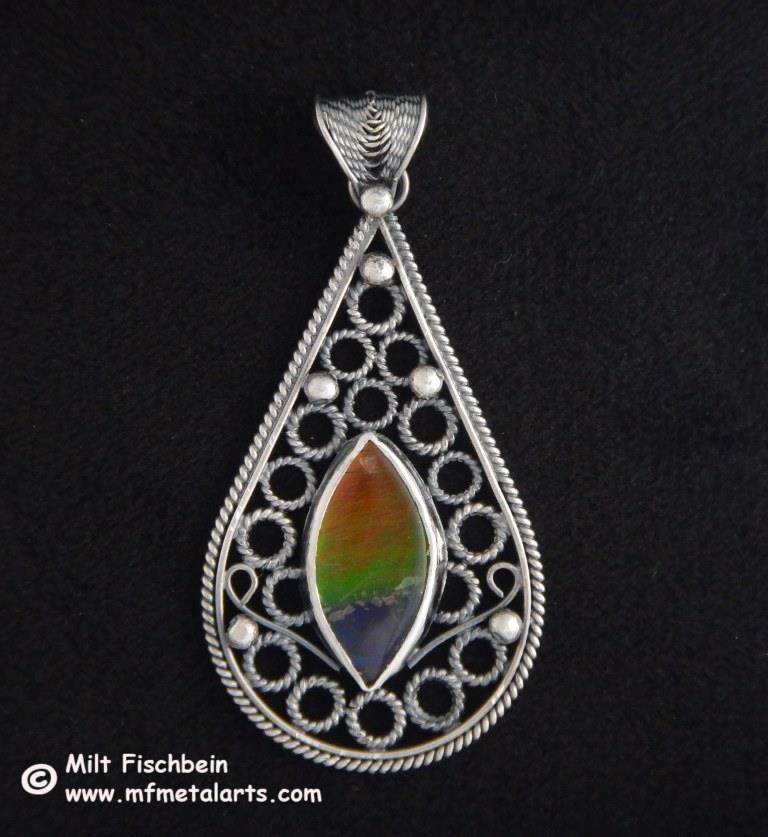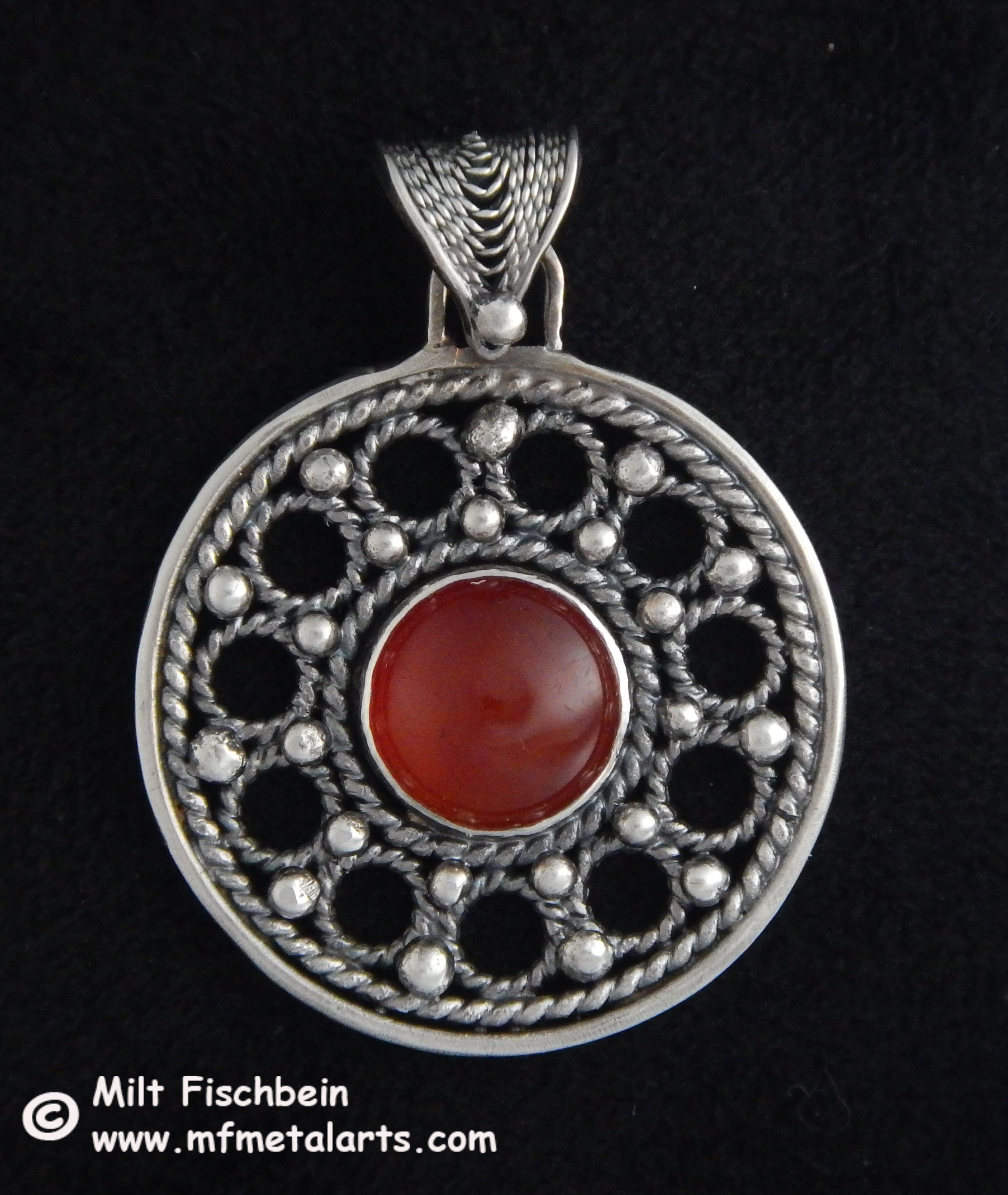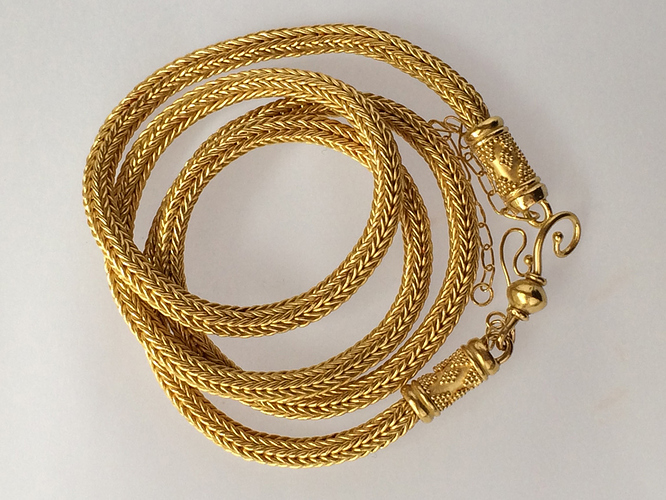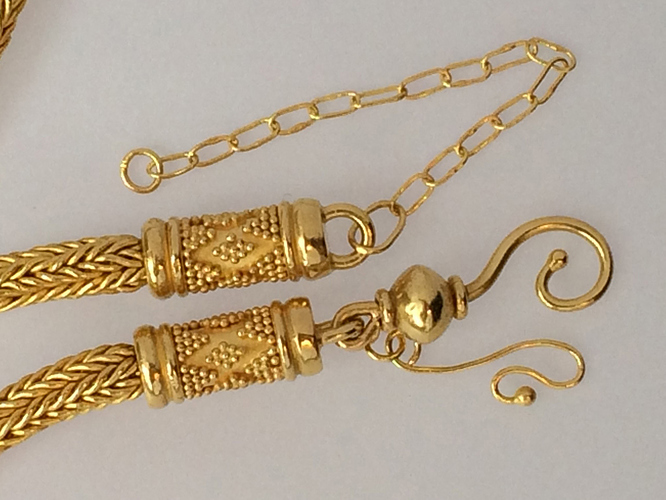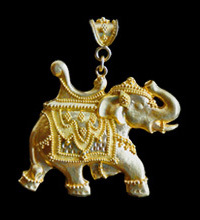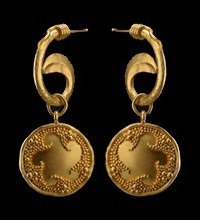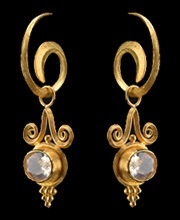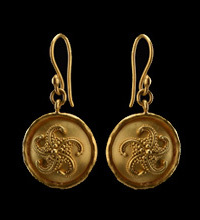Hi All!
About 5 years ago, my partner suggested I try granulation as a creative outlet for my perfectionist tendencies, and he was right, it’s a medium I just adore working in! I took a couple of classes with the excellent teacher Ronda Coryell, who teaches fabrication and granulation in Argentium silver and gold.
Granulation is the most important design aspect of all my pieces in one way or another. For some pieces, it’s about pattern and the way the granules arrange themselves. For others, the granules are more of a textural element adding sparkle and a tactile quality.
I also work with many ancient beads and carvings, some thousands of years old, and the timeless look of granulation creates an aesthetic context for these objects that both reflects their history and brings them into the present. As I work, I feel I am suspended in time, lost in the hours it takes to place the granules, working in a process that a jeweler from centuries ago would recognize.
My main focus so far has been making beads. They all start as sheet, wire, and granules. I purchase my Argentium granules, but I make my own 18k gold ones from little snippets of wire. Sheet is cut into disks and dapped into half spheres, and wire is shaped into patterns and dapped to fit the spheres.
For the first firing, I place the wires in patterns that are sometimes planned, and sometimes spontaneous. Flux helps hold them in place, and also gives a visual indicator of their fusing under the torch, as well as helping the fusion happen.
After the wires are fused down, I place the granules with a paintbrush and more flux, and then fuse again. This fusing is the one I’m always striving to be better at. I watch the metal for a flash and slight mirrored quality that indicates just the barest skin is melted so the granules and base will unite. I try to keep that melting as minimal as possible so that the granules are properly attached, but just barely. When I manage to hit that balance, the design has a levity to it and seems to float.
The third and final fusing is to unite the two hemispheres of the bead, which is tricky and where it can all go wrong if I’m not careful. It’s a big relief when this part goes well!
After all the firings, I finish to different degrees of polish, depending on the piece, and antique and highlight the design. Then, they’re strung onto wire or chain in combination with the ancient beads I’ve selected. Some chain I make myself, and I’d like to get into that more.
Some designs are geometric or artistic and just come out as they are in my head, while others I research and design to match the beads or ancient item I’m working with.
I’ll post my entries in replies below- the system won’t let me put them all in one post. Thanks for looking!
Micah Nilsson
Nymphaea Blue
nymphaeablue.com
For this necklace, I’ve used 15th century Afghani lapis beads which were cut in a sacred geometric shape, and the beads I created in Argentium and 18k are based on a pattern I saw on an Islamic prayer rug:
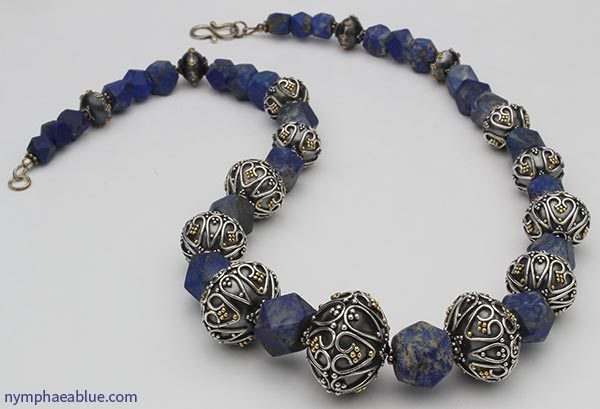
This necklace features a 2nd century Amazonite drop from Mali, with my granulated beads echoing the long shape of the drop:
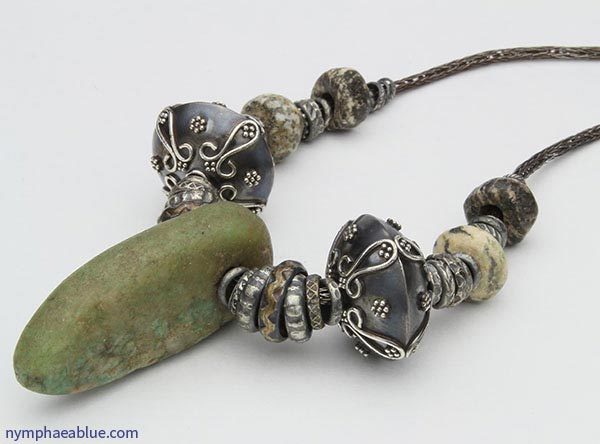
The glass millefiore beads on this necklace are Byzantine, in source and in their busy patterns, and I tried to match that ornate feeling in my beads:
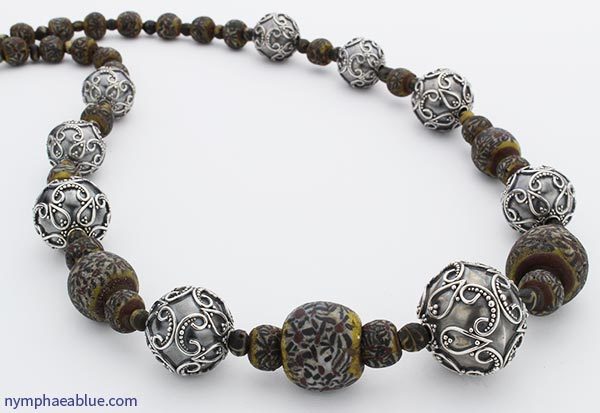
Finally, these beads in Argentium and 18k were created first with layouts I had been playing with, and they turned out to be a good match for these Asian agate beads.
